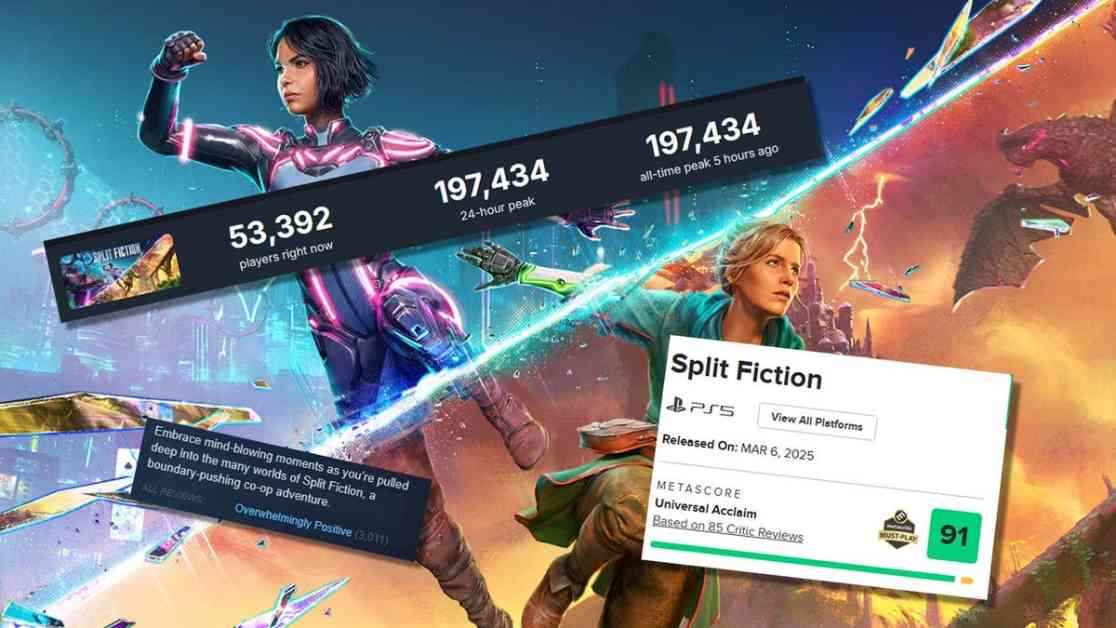As the ink dries on this article, Hazelight’s latest co-op adventure game, Split Fiction, is taking the gaming world by storm. Despite being on the market for less than 48 hours, the game has already garnered high player counts, top Metacritic rankings, glowing reviews, and stellar player ratings, making it one of EA’s most successful and critically acclaimed releases in years. This instant success story serves as a valuable lesson for EA and other game publishers in the industry.
### The Launch and Reception
Just a mere 12 weeks after its reveal at the Game Awards in December, Split Fiction hit the shelves on March 6, marking a significant milestone in the world of co-op gaming. The game has received widespread acclaim, with critics and players alike praising its innovative gameplay and high production value. Kenneth Shepard, a respected voice in the gaming community, described Split Fiction as a “victory lap” for Hazelight, a studio renowned for its exceptional co-op titles over the past decade. Personally, I can attest to the game’s brilliance, having spent countless hours immersed in its rich world alongside my partner. The game is a treasure trove of captivating moments and creative ideas that have left us spellbound.
### Impressive Performance Metrics
When examining Split Fiction’s performance metrics, it’s hard not to be impressed by the numbers. Metacritic, a well-known review aggregator, currently rates the game at 91 on PS5 and 92 on Xbox and PC, making it the highest-rated game of 2025 so far. This achievement is particularly noteworthy for EA, as Split Fiction marks the company’s first title to score 90 or above on Metacritic in over a decade. On the Steam platform, the game’s popularity is equally striking. Within hours of its launch, Split Fiction boasted over 190,000 active concurrent players, rivaling established giants like GTA V and Rust. This milestone also set a record for EA, with the game achieving the second-highest peak player count on Steam, second only to the wildly popular Apex Legends.
### Lessons Learned and Future Prospects
Split Fiction’s success underscores the potential for smaller, more focused games to make a significant impact in the gaming industry. The game’s positive reception on Steam, with a 94 percent user rating, further solidifies its position as a standout title for EA. By opting to release Split Fiction on Steam without requiring a separate launcher, EA has demonstrated a player-centric approach that resonates with the gaming community. Additionally, Hazelight’s dedication to crafting smaller co-op experiences over the years has undoubtedly honed their skills and paved the way for future success.
As we reflect on Split Fiction’s triumph, the question arises: will EA and other publishers heed the lessons of this breakout hit? While the industry landscape may remain unpredictable, one can’t help but hope that the success of Split Fiction will inspire a shift towards supporting smaller, more innovative projects. In a world dominated by blockbuster releases and massive marketing campaigns, the rise of Split Fiction serves as a beacon of hope for indie developers and players alike. Time will tell whether this success story sparks a lasting change in the gaming industry, but for now, Split Fiction stands as a testament to the power of creativity, collaboration, and unwavering passion in game development.
















